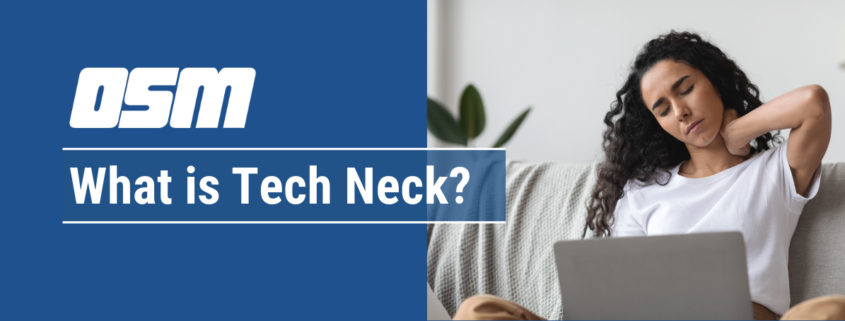What is Tech Neck? Simple Strategies to Prevent It
Article featured on Raleigh Orthopedic
In our increasingly digital world, spending hours on smartphones, tablets, and computers has become the norm. While this technology connects us and makes our lives more convenient, it also brings about new health concerns—one of the most common being “Tech Neck.”
Understanding Tech Neck
Tech Neck, also known as Text Neck, is the strain and discomfort caused by looking down at your electronic devices for extended periods. The human head weighs about 10-12 pounds, but as you tilt it forward, the pressure on your neck increases significantly. At a 45-degree angle, the head exerts nearly 50 pounds of force on the neck muscles, leading to pain, stiffness, and sometimes even more severe issues like herniated discs or pinched nerves.
Symptoms of Tech Neck
Tech Neck can manifest in several ways:
- Neck and Shoulder Pain: This is the most common symptom, often described as a dull ache or sharp pain.
- Headaches: Strain on the neck muscles can lead to tension headaches.
- Reduced Mobility: Stiffness in the neck and shoulders can make it difficult to turn your head or raise your arms.
- Postural Changes: Over time, constantly looking down can lead to a hunched posture, which can exacerbate back pain and other musculoskeletal issues.
Simple Strategies to Prevent Tech Neck
The good news is that Tech Neck is largely preventable with a few mindful habits and ergonomic adjustments. Here are some strategies to help you maintain a healthy posture:
- Adjust Your Screen Height: Ensure that your computer screen is at eye level so you’re not looking down for extended periods. For smartphones and tablets, try to hold them at eye level or use a stand.
- Take Frequent Breaks: Follow the 20-20-20 rule: Every 20 minutes, take a 20-second break to look at something 20 feet away. This simple habit can reduce eye strain and help you maintain a neutral posture.
- Practice Good Posture: Sit with your back straight, shoulders relaxed, and feet flat on the floor. Your ears should be aligned with your shoulders to avoid tilting your head forward.
- Strengthen Your Neck and Back Muscles: Incorporate exercises that strengthen your neck, shoulders, and back into your routine. Simple stretches like neck rotations, shoulder shrugs, and chest openers can make a big difference.
- Stay Mindful of Your Posture: Make a conscious effort to check your posture throughout the day. Consider setting reminders on your phone or computer to help you stay aware.
- Use Supportive Accessories: Ergonomic chairs, standing desks, and lumbar cushions can all help you maintain proper alignment while working.
When to Seek Professional Help
If you’re experiencing persistent neck pain, headaches, or reduced mobility, it’s important to consult a healthcare professional.
By taking proactive steps today, you can protect your neck from the strain of modern technology. Remember, your posture matters—not just for your appearance, but for your overall health and well-being.
The Orthopedic & Sports Medicine Center of Oregon is an award-winning, board-certified orthopedic group located in downtown Portland Oregon. We utilize both surgical and nonsurgical means to treat musculoskeletal trauma, spine diseases, foot and ankle conditions, sports injuries, degenerative diseases, infections, tumors and congenital disorders.
Our mission is to return our patients back to pain-free mobility and full strength as quickly and painlessly as possible using both surgical and non-surgical orthopedic procedures.
Our expert physicians provide leading-edge, comprehensive care in the diagnosis and treatment of orthopedic conditions, including total joint replacement and sports medicine. We apply the latest state-of-the-art techniques in order to return our patients to their active lifestyle.
If you’re looking for compassionate, expert orthopedic and podiatric surgeons in Portland Oregon, contact OSM today.
Phone:
Address
17355 Lower Boones Ferry Rd Suite 100A
Lake Oswego, OR 97035
Hours
Monday–Friday
8:00am – 4:30pm



